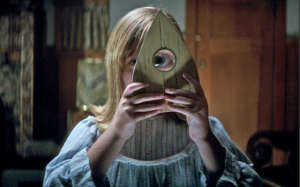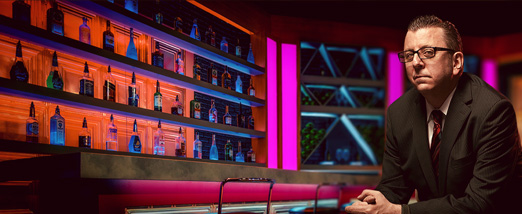Metro In Focus: A brief, creepy, history of Ouija boards in movies
 By Richard Crouse – Metro In Focus
By Richard Crouse – Metro In Focus
For almost 100 years Ouija Boards have caused trouble on the big screen. From the 1920 movie Ouija Board to this weekend’s Ouija: Origin of Evil, characters have used witchboards to communicate with the dead to disastrous results.
The most famous Ouija design features the alphabet, numbers from 0 to 9, and the words yes, no and goodbye printed on the board in an elaborate font. The spirits use a wooden heart-shaped planchette or a pointer to answer the living’s questions from beyond.
Changes have been made to the basic design over the years. There have been glow-un-the-dark versions, a pink board marketed to teen girls and one with a light up planchette that illuminates the board’s hidden messages.
Whatever the look, the spirit board has also been a springboard for many movies.
The 1960 film 13 Ghosts begins when a wealthy occultist bequeaths his home to his nephew. In a scene that almost plays like a commercial for Ouija, the home’s new residents soon discover a spirit board. “Ouija, the mystifying oracle, “says Medea (Jo Morrow), “the most modern method of fortune telling. Anyone want to try it?” They gather round the board and ask, “Are there any ghosts in this house?” The answer is yes and soon the spirits make their presence known.
The kitschy movie was a hit and helped spark the Ouija craze of the 1960s, which hit a high in 1967 when sales of the talking boards surpassed Monopoly. “In the late 1800s continuing all the way into the 1960s, the Ouija board was considered good, clean, family fun,” says designer Roman Mars. Then in 1973, along came a movie that scared audiences and consumers alike.
The Exorcist, the most famous of all demon possession movies, is based in part on the 1949 case of an anonymous Maryland teenager. The Catholic Church declared the boy to be under a diabolical spell when strange things started happening — levitating furniture and holy water vials crashing to the ground — after he played with a Ouija board.
In the famous film a teenage girl is possessed by a demon after she finds an old Ouija Board in a closet. Playing with the board, she encounters Captain Howdy, a.k.a. Pazuzu, king of the demons of the wind. “I ask the questions and he gives the answers!” she says before her head starts spinning.
Ouija historian Robert Murch compares The Exorcist’s effect on the decline in popularity of the boards to a famous thriller’s influence on everyday hygiene.
“It’s kind of like Psycho,” he says. “No one was afraid of showers until that scene.”
Immediately following the release of The Exorcist witchboards were suddenly perceived as an instrument of the devil, a conduit between demons and regular folks.
Sales of the boards took a hit but filmmakers were quick to respond. The Turkish movie Seytan and Spain’s Escalofrío were first out of the gate, opening the floodgates for dozens of films like Witchboard, What Lies Beneath and the wildly popular Paranormal Activity who all used the boards as a tool of terror.
Not everyone is afraid of the boards, however. “People have told me ‘Betty, Facebook is a great way to keep in touch with old friends,’” joked ninety-four-year-old actress Betty White. “At my age, if I wanted to keep in touch with old friends, I’d need a Ouija board.”
